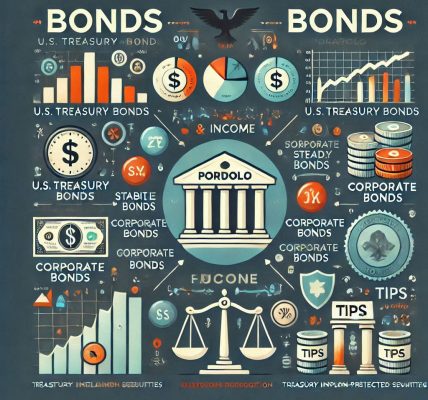When investing in bonds, understanding Yield to Maturity (YTM) is essential for evaluating potential returns and making informed decisions. YTM is a comprehensive measure that reflects the total return an investor can expect if a bond is held until maturity. It provides insights into the bond’s future cash flows, allowing investors to compare different bonds effectively.
In this in-depth guide, we explore the concept of YTM, explain how it is calculated, and discuss its significance in bond investing.
📚 What is Yield to Maturity (YTM)?
💡 Definition
Yield to Maturity (YTM) is the total annualized return an investor can expect if a bond is held until its maturity date, assuming that all coupon payments are reinvested at the same rate.
YTM considers:
- The bond’s current market price
- The coupon payments (interest payments)
- The face value (principal repayment)
- The time remaining until maturity
📊 How Does YTM Work?
YTM calculates the rate of return that equates the present value of a bond’s future cash flows (coupon payments + principal repayment) with its current market price.
- Higher YTM: Indicates a potentially higher return but may signal increased risk.
- Lower YTM: Suggests lower returns but potentially safer investments.
📉 Example of Yield to Maturity Calculation
Consider a bond with:
- Face Value: ₹1,000
- Coupon Rate: 5%
- Maturity Period: 5 years
- Current Market Price: ₹950
The YTM considers these factors to calculate the rate that makes the present value of future cash flows equal to ₹950.
📝 Why is Yield to Maturity Important in Bond Investments?
📊 1. Evaluating Bond Returns
YTM provides a standardized measure to compare bonds with different coupon rates, maturities, and prices. It helps investors assess potential returns accurately.
🔄 2. Measuring Total Return Potential
YTM includes both the interest income and any capital gain or loss, giving a comprehensive view of the bond’s total return.
⚖️ 3. Comparing Bonds with Different Characteristics
Since YTM standardizes returns, it allows investors to compare bonds with varying:
- Coupon rates
- Maturities
- Credit ratings
📈 4. Assessing Investment Risk
A higher YTM often indicates a higher-risk bond, while a lower YTM suggests a safer investment. Understanding YTM helps align bond investments with risk tolerance and financial goals.
🔎 How to Calculate Yield to Maturity (YTM)
The formula for YTM is derived from the present value of future cash flows: P=∑(C(1+YTM)t)+F(1+YTM)nP = \sum \left( \frac{C}{(1 + YTM)^t} \right) + \frac{F}{(1 + YTM)^n}P=∑((1+YTM)tC)+(1+YTM)nF
Where:
- P = Current price of the bond
- C = Coupon payment
- F = Face value (principal amount)
- t = Time period of each coupon payment
- n = Total number of periods until maturity
- YTM = Yield to Maturity
📊 Step-by-Step YTM Calculation
✅ Step 1: Identify the bond’s key data
- Face Value (F): ₹1,000
- Coupon Rate (C): 5% per annum
- Market Price (P): ₹950
- Years to Maturity (n): 5 years
✅ Step 2: Estimate future cash flows
- Annual coupon payment = ₹1,000 × 5% = ₹50
- Total coupon payments over 5 years = ₹250
- Principal repayment = ₹1,000 at the end of 5 years
✅ Step 3: Use the YTM formula
The YTM is the rate that equates the present value of these future cash flows to the current market price of the bond.
📈 Factors Affecting Yield to Maturity
📉 1. Bond Price Movements
- Discounted Bonds: If a bond trades below its face value, YTM increases as investors earn capital gains in addition to interest payments.
- Premium Bonds: If a bond trades above its face value, YTM decreases because investors face a capital loss upon maturity.
🔄 2. Time to Maturity
Bonds with longer maturities tend to have higher YTM to compensate for increased risk over time.
📊 3. Credit Quality of the Issuer
- Higher-Rated Bonds: Lower YTM due to reduced default risk.
- Lower-Rated Bonds: Higher YTM to compensate for additional risk.
💡 4. Interest Rate Environment
- Rising Interest Rates: Existing bond prices fall, increasing YTM for new buyers.
- Falling Interest Rates: Bond prices rise, reducing YTM.
📝 Types of Yield Metrics Compared to YTM
| Metric | Definition | Use Case |
|---|---|---|
| YTM (Yield to Maturity) | Total return if held until maturity | Evaluate long-term bond returns |
| Current Yield | Annual coupon payment ÷ bond price | Assess current income generation |
| Yield to Call (YTC) | Return if bond is called before maturity | Evaluate callable bonds |
| Yield to Worst (YTW) | Lowest yield under worst-case scenario | Conservative bond analysis |
🔎 Understanding Yield Curve and Its Impact on YTM
📊 1. Normal Yield Curve
Indicates higher YTM for longer-term bonds due to increased risk over time.
📉 2. Inverted Yield Curve
When short-term bonds have higher YTM than long-term bonds, often a signal of economic recession.
🔄 3. Flat Yield Curve
Yields remain relatively stable across different maturities, indicating uncertainty in the interest rate environment.
🛡️ How to Use YTM for Better Investment Decisions
✅ 1. Compare Bonds with Different Maturities
YTM helps investors choose between short-term and long-term bonds by evaluating the potential return.
📊 2. Assess High-Yield vs. Investment-Grade Bonds
Higher YTM in high-yield bonds may come with higher risk, while investment-grade bonds offer safer, albeit lower, returns.
🔍 3. Evaluate Callable Bonds Carefully
For callable bonds, compare Yield to Call (YTC) with YTM to account for the possibility of early redemption.
⚖️ 4. Monitor Market Conditions and Rate Trends
YTM fluctuates based on market interest rates. Align bond purchases with expected rate movements to maximize returns.
📚 Risks and Limitations of Yield to Maturity
⚠️ 1. Reinvestment Risk
YTM assumes that all coupon payments are reinvested at the same rate. If reinvestment rates are lower, actual returns may be lower than projected.
📉 2. Market Price Volatility
Bond prices fluctuate due to changes in interest rates, potentially affecting YTM calculations if the bond is not held until maturity.
💡 3. Credit and Default Risk
YTM does not account for credit downgrades or default risks, which can impact bond returns.



